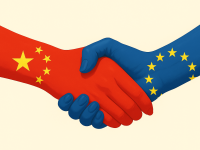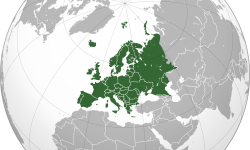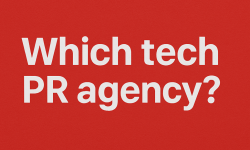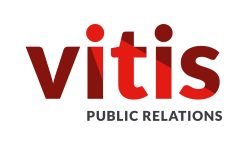There has been a real shift in Chinese self-driving technology firms viewing Europe as their next marketplace, but this is not the only sector where Chinese tech companies are betting on Europe for expansion and success. For any Chinese tech firms looking to start any sort of European media outreach, the best way to ensure actual media mentions is to work with an experienced agency, so it’s important to understand how to work with European PR agencies ahead of any expansion in that area.
Operating models, timelines, and expectations can be quite different from those in China. Here’s what Chinese tech firms should keep in mind before partnering with EU and UK PR agencies:
How to Build a Strong PR Brief for European Agencies
European agencies typically spend time upfront helping you develop a detailed brief — this isn’t red tape, but the foundation for achieving measurable results. Unlike the more flexible and fast-changing approach often seen in China, European PR teams focus on clarity from the start: defining business objectives and KPIs to track success, identifying target audiences to ensure precision in messaging, and highlighting product positioning and unique selling points to stand out from competitors.
For short-term projects — such as product launches or review campaigns — agencies can move quickly and hit the ground running once they have the essentials in place. But for long-term brand-building or sustained market awareness, it’s worth investing time in careful planning.
Your agency may also ask for a competitive landscape analysis to understand where your brand currently stands in Europe, along with budget parameters and timeline expectations. These details help them align strategy, resources, and deliverables effectively.
In general, expect about one month of setup, planning, and tailoring before execution begins — this ensures the right foundations for success from month two onward.
How European Media Relations Differ from China
One major difference that often surprises Chinese clients is that European agencies will not share complete media lists with full contact details. This is a notable shift from standard practice in China, where agencies may share the journalists’ names, email addresses and telephone numbers as well as the outlets they write for.
The Chinese media ecosystem is more relationship-driven (“guanxi”) and operates with fewer privacy restrictions. However, in Europe, there is a difference due to journalist relationships being considered proprietary assets that agencies have built over years, and some journalists having specific preferences for who contacts them and how they prefer to be approached. European data protection regulations (GDPR) also imposes strict legal limits on sharing personal contact information without permission in every country across Europe, and in the UK and the US too.
If you require an idea of which media your agency partner intends to reach out to on your behalf, you will mostly receive only the media outlet names. Media coverage reports can include the outlet names, types of coverage secured, the names of which journalists have written the features or about the news, and the media sector and circulation.
When it comes to measuring results, a quick note here is that not all relevant media are Tier 1 or national, 15 million uvpm and above. In Europe there are a wealth of smaller, nuanced, more focused media that are well-respected and would help you reach your target audience. So do not push your agency partner to only approach the biggest media.
Instead, by agreeing that your agency can reach out to more media targets than just a select bunch of 15M+ uvpm outlets, there is a higher chance of securing additional media coverage to reach a much wider audience. Also consider freelancers as many of them write for a vast array of media outlets – any one of which could be the right one for coverage in/with.
Media introductions will only be facilitated by the agency when appropriate – you will not be copied into any media outreach emails. So you need to trust that your agency's media relationships are working for you, even if you don't have access to every contact. However, many agencies are happy to share their email pitches with you for approval before they are sent, to ensure you are happy with those.
If you have another agency working on media outreach from your region or the US, it is always best to either introduce the agency partners so they can compare media lists and take ownership of any that are on both lists. For example, if your Chinese agency is pushing the same news to Reuters, BBC, The Guardian, China Daily or Deutsche Welle – all international media with reporters in China and across Europe – as your German agency, some journalists will be unimpressed. Duplicated efforts may adversely affect your results as media prefer being contacted by one agency only. The same is true of any in-house marketing and sales teams contacting EU media.
Understanding PR Agency Payment Models in Europe
European business culture emphasises clear contracts and upfront commitments. In terms of retainer versus project-based, most EU agencies work on monthly retainers with payment terms of 30 days. However, new Chinese clients may be asked to pay 50% of the total upfront, in advance for the first month of work they undertake. The remaining balance is traditionally due within 30 days of the invoice, but some agencies may request payment for the first quarter upfront. This isn’t a sign of distrust. It is instead standard risk management for international partnerships and reflects the costs agencies incur on your behalf from day one.
Pay-to-Play: How European Media Budgets Differ from China’s
Aside from traditional media relations, which includes press releases, reviews, briefings and articles which are classed as earned media, a key reality many Chinese tech firms learn too late is that some European media operate on pay-to-play models, which require a separate budget from agency fees. Trade publications often charge for advertorials or sponsored content, and some outlets only offer guaranteed coverage if you pay a small amount or have a coverage package with them.
Awards and rankings often require entry fees so you need to budget accordingly. Alongside the agency retainer or agreed fees for strategy, planning, drafting, pitching, and media relations, plus coverage monitoring and management, Chinese tech firms should also have a separate budget for the media. This would include sponsored content, guaranteed placements, advertorials, and any similar editorial opportunities. The recommended monthly additional “media opps” budget can range from €2,000-€45,000 depending on the outlets you want to be seen in, the frequency, level of activity and the opportunity secured.
Your agency will advise on which opportunities are worth investing in, but they cannot pay for these on your behalf. Without a dedicated media investment budget beyond agency fees though, you undermine your agency partner’s ability to maximise your potential impact, and success. So, to increase your media mentions and your agency partner’s ability to achieve more for your company, it is always worth setting aside additional budget for media opportunities and investments.
Planning Lead Times: From Press Releases to Major Launches
Lead Times Are Longer
European media and campaigns require longer lead times than in China. Print publications usually work on features 4 – 6 weeks before they are drafted and submitted for editor consideration. This means that an interview your spokesperson had with the journalist in September may not go live on the site/in the magazine until mid-November or even start of December.
Online features take a minimum of 2-8 weeks from receipt to coverage going live. Even news announcements are not always same-day. EU media receive hundreds to thousands of pitches, emails and interview offers every single day so, to ensure your news is front of mind on official launch/release day, it is always advised to offer an embargoed version of the press release or research, whitepaper, whatever it is you are launching at least one week ahead of that date. This allows interested media to ask questions, talk to a spokesperson, to review the release, research, whitepaper before the official launch date to write the news up ahead of time.
Major campaigns can begin 3-4 months before launch to allow for the right level of planning to be conducted. This helps the agency to reach the right media contacts, as media lists are an ongoing document, thanks to some journalists changing beats regularly or moving to alternative outlets. By giving the journalists embargoed offers well ahead, you are allowing the PR agency to gauge interest and change the pitch if needed, offer interviews, and then set up, host and follow up on those calls before the official launch date.
Most importantly, do not expect results within the first 30 days. A timeframe of three to six months is realistic for noticing meaningful coverage momentum across Western media.
Europe’s Holiday Calendar: How to Time Your PR Launches Right
European work culture includes extended holiday periods that can greatly affect media relations. Summertime (July to August inclusive) sees many journalists take 2-4 week holidays over those two months. In Germany, for example, there is a name for the period from the end of June until the middle of August – Sommerferien.
Newsrooms may run with limited staff over the summer and major product launches during this time often struggle for attention.
Winter (December to January) is when the majority of media shut down for Christmas. So, from mid-December to mid-January, any announcements made will likely be overlooked. Also, it is worth noting that to manage their news sites over this “downtime” EU media pre-plan features and schedule them for publication before they break off. This means it is an ideal opportunity to pitch and secure articles and interviews or similar before the end of November to get media mentions over the festive period. And not all European countries have Christmas at the same time! Say Spain and Serbia celebrate Christmas in early January, whereas the UK is on 25 December.
Additional considerations may vary depending on which country you want to target. Easter holiday timing varies, but is usually late March/early to mid-April. National holidays vary by country. So, 27 April is a holiday for King’s Day in the Netherlands only, while in France the country is on public holiday 14 July for Bastille Day. Belgian’s National Day is 21 July but Luxembourg’s is 23 June. Germany has a Unity Day holiday on 03 October so be aware of what holiday dates you need to take into account.
Plan major launches for September-November or February-May. If you must launch during quiet periods, expect limited coverage and adjust your expectations accordingly.
Adapting to European Communication Styles and Response Times
European agencies typically respond within 24-48 business hours. The 24/7 instant response culture common in China is not standard practice outside of the East. Respect work-life boundaries, and do not expect EU PR agencies or media to be available every hour of every day.
European processes are often slower and involve more stakeholders. This means that your EU PR agency partner will need time to coordinate with their in-house team, and journalists, before coming back to you. Do not expect results the same day, as it is always advised to ensure everyone is on the same page before progressing anything. This isn't inefficiency. Instead, this slower process avoids mistakes.
Media coverage reports should be expected monthly or bi-weekly reporting rather than via daily updates. Constant coverage is rare in European markets; quality matters more than quantity, but also, your team is being paid to secure opportunities, so their time is better spent on that than on updating you constantly.
Key Cultural Insights for Chinese Tech Companies Entering Europe
· Transparency matters: European journalists and agencies value honesty about product limitations, pricing, and market position. Overpromising damages credibility long-term.
· Data privacy: GDPR affects everything from how agencies handle data to what can be shared with media. Respect these legal requirements.
· Local nuance: Europe isn't monolithic. UK media culture differs from German, which differs from French. A pan-European campaign requires localised approaches.
· Sustainability and ethics: European media scrutinise environmental claims, labour practices, and data handling. Be prepared for tough questions.
How to Build Long-Term Success with European PR Agencies
From our teams’ experience of working with Chinese tech firms, from Zhiyun, Oppo and XGIMI to Yaber, VanTop, Kyvol and Huami, the most successful Chinese-European agency relationships have all been with clients who understand that the EU media and market is a far cry from the Chinese.
We worked as advisors, tailoring our approach and campaign to meet the client’s expectations but we also pushed back when they wanted something that we simply wouldn’t achieve. We know our media better so please do take our advice. Trust in your agency partner’s expertise regarding local market nuances, and be patient with them while they build media relationships and brand awareness over time – particularly if you have never done any sort of media relations in their country before.
For example, setting realistic expectations about timelines, coverage potential, and market differences is critical to set up front. All of the potential client Chinese tech companies that we spoke to who demanded at least 10 reviews per month or 50 media mentions in the first 30 days were not ones we worked with in the end. Why? Well, because media coverage in Europe is never guaranteed. While we could have comfortably tailored the media outreach plan to secure those targets, having them written in stone meant we couldn’t progress with those potential news clients, as no EU agency would ever guarantee what the clients demanded.
Clear communication channels with designated points of contact on both sides is useful to help keep things moving along.
Final Thoughts: Winning in Europe Means Moving Smarter, Not Faster
Working with European PR agencies requires a definite adjustment from the typical operational speed and approach that is more commonplace in the Chinese tech sector. Investing in upfront planning, accepting longer timelines, budgeting realistically for pay-to-play opportunities, and respecting different working practices will yield benefits in establishing a credible market presence.
The agencies that succeed with Chinese clients clearly explain these differences from the start. The Chinese clients that thrive in Europe are those willing to tweak their expectations and approaches, based on European market realities. Being open to advice, guidance and feedback from your EU agency partner will only help them better adapt strategies to raise brand awareness and gain media attention.
Success in European markets isn’t about moving faster. Instead, it’s about moving smarter, guided by the right local expertise. With proper expectations and sufficient investment, Chinese tech firms can build the strong European presence their products deserve.
Who to talk to about raising your brand profile in Europe
Whether you are looking to raise your profile in the UK, CEE, or the rest of Europe, we are part of a thriving network of tech PR agencies that can help raise your brand awareness, so let’s connect and get working.
Image source: DALL-E









